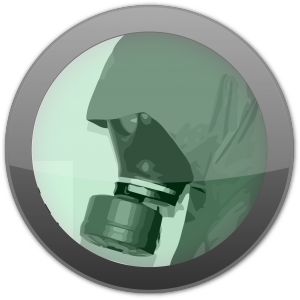Indoor Air Quality

What You Need to Know
Indoor air quality has a direct impact on the health and comfort of building occupants
Indoor air quality can be affected by gases, (carbon dioxide, volatile organic compounds (VOCs), radon) particulates, microbial contaminants (mold, bacteria) or any stressor than can result in adverse health effects
Increasing ventilation is one of the simplest and most effective means of at least temporarily improving indoor air quality
A key indication of indoor air quality issues is the improvement of symptomology when away from the potential source of the problem
What You Need to Do
A typical indoor air quality screen will consist of taking measurements of carbon monoxide, carbon dioxide, oxygen, temperature, and relative humidity as well as taking measurements of any other potential identified air quality issues
If an issue is suspected, identify any potential sources of contamination, ensure HVAC systems are working properly and that building usage has not changed
If an issue is suspected, most often a comprehensive investigation of the building as a whole will be necessary
Consider retaining 3rd party experts to perform the investigation
Myths and Misconceptions
Much of the indoor air quality complaints can be traced to a simple lack of oxygen and/or too much carbon dioxide in a space—TRUE
Indoor pollutants can cause health problems including sore eyes, burning in the throat, headaches, fatigue, respiratory illnesses, cancer, and even death-TRUE
The EPA requires that all schools must comply with their Indoor Air Quality Tools for Schools Program- FALSE
There is now conclusive evidence that the use of strong fragrances indoors can cause adverse health effects in sensitive individuals-FALSE
Expert Services:
Insurance
Claims: Prevention and Response
- Site Investigations/Inspections
- Loss Mitigation Protocol Development
- Creative Scope of Work Development
- Project Oversight
- Environmental Sampling
- Cause and Origin Investigation
- Emergency Response
- Client Interface
- Communication/Alert Development
- Liability Exposure Minimization
- Expert Consultation
Underwriting: New Product Development and Risk Assessment
- New and Emerging Risk Education-Focus on New Areas of Coverage Opportunity
- New and Emerging Product/Technology Applicability to Underwriting Coverage
- Recommendations for Coverage Expansion Based on Risk Minimization Strategies
- Policy Language Review/Development Based on Industry Specific Issues
Due Diligence: Investigation, Auditing, Verification and Risk Assessment
- Project Oversight Ensuring Compliance with Policy Coverage
- Immediate Communication re Project Issues Impacting Policies
- Detailed Reports of Project Findings/Oversight with Recommendations
- Cost Estimate Development Based on Construction/Remediation Options
- Phone Surveys/Desktop Reviews Focusing on Issues of Potential Concern
Remediation Cost Auditing and Risk Quantification
- Review/Audit of Contractor Invoices
- Scope of Work Performed Analysis (Best Practices, Regulatory Compliance)
Expert Testimony
- Environmental Risk
- Healthcare Risk
Education and Training: Claims and Underwriting
- Seminars/Webinars on Environmental/Healthcare Issues Focusing on Claims/Underwriting Risk
- Seminars/Webinars on Emerging Issues and Policy Impact as well as Coverage Expansion Opportunities
- White Paper Development
Insurance Toolkits: Claims and Underwriting
- Development of Underwriting Applications for Healthcare/Environmental Risk
- Development of Value Added Risk Management Checklists/Protocols for Insureds
- Operations and Maintenance Programs for Water Intrusion Risk Management, Asbestos, Lead Based Paint
- Hazard Assessment Critical Control Point Programs (HACCP)
Insurance Risk Alert Service
- Development of Insured Alert Communications re Emergency Healthcare/Environmental Risk
- Development of Employee Alert Communications re Emergency Healthcare/Environmental Risk

